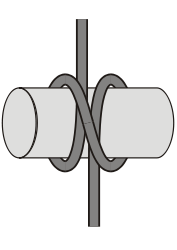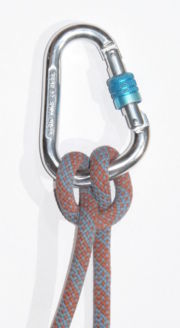| Home | First Posted Jan 9, 2010 Jan 21, 2020 | |
Clove Hitch, Builder's Knot and Ratline HitchThe clove hitch is a type of knot. It consists of two identical half hitches made successively around an object. It is most effective used as a crossing knot. Although it can be used as a binding knot, it is not particularly secure in that role.[1] A clove hitch made around the standing part of the line is known as either Two half-hitches or Buntline hitch, depending on whether half-hitches progress away or towards the hitched object. Used as a traditional hitch, that is loading only one end, the clove hitch is liable to slip. It requires a load in each direction in order to be effective, such as when being used as a crossing knot. It should not be relied on with rope that is thin or very slippery, as it can work itself loose, especially under a swinging or rotating load. However, for this very reason, the knot is useful in situations where the length of the running end needs to be adjustable. It can also jam and become difficult to untie under some situations. To tie a clove hitch, first place a loop around the pole, with the working end of the rope on top. Run the working end round the pole once more until you meet the place where the ropes cross, then pass the working end under the cross. Pull to tighten.
 Clove Hitch
 Clove Hitch
|